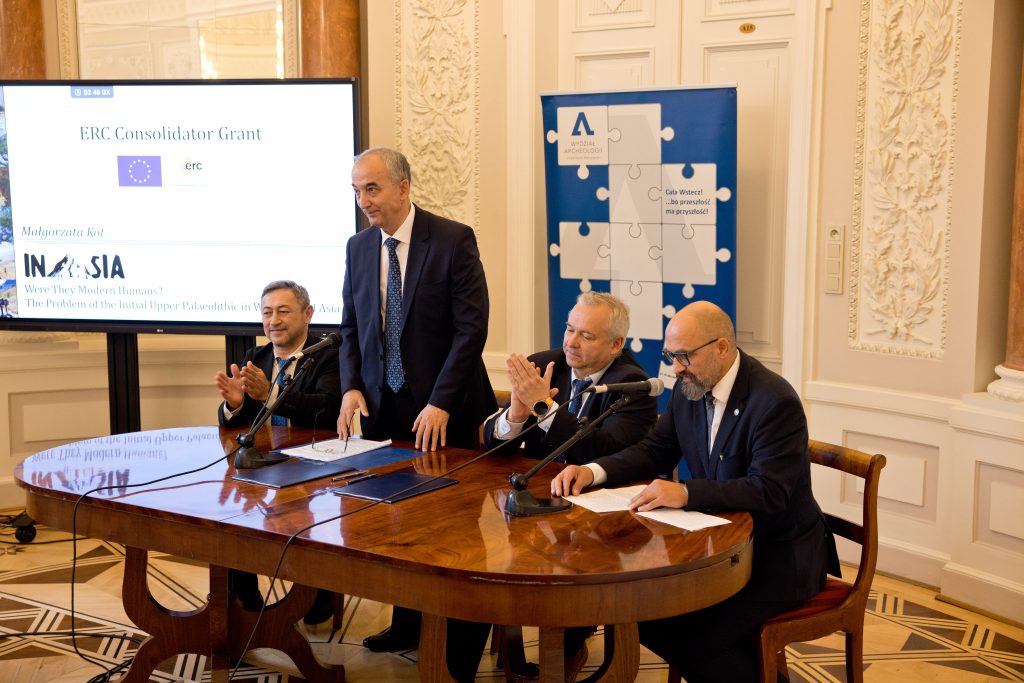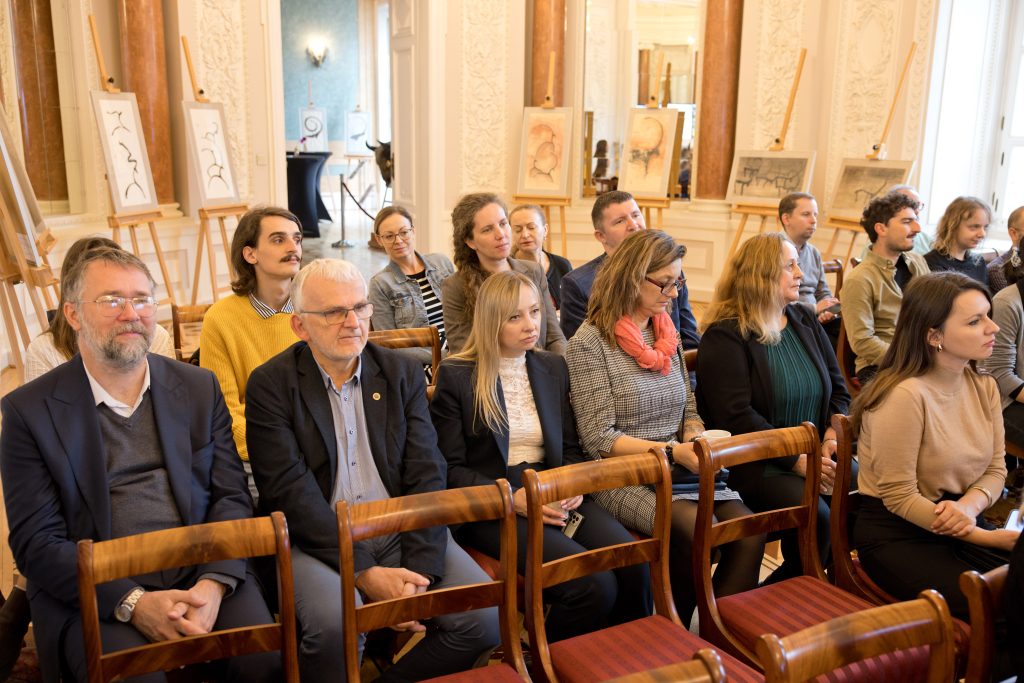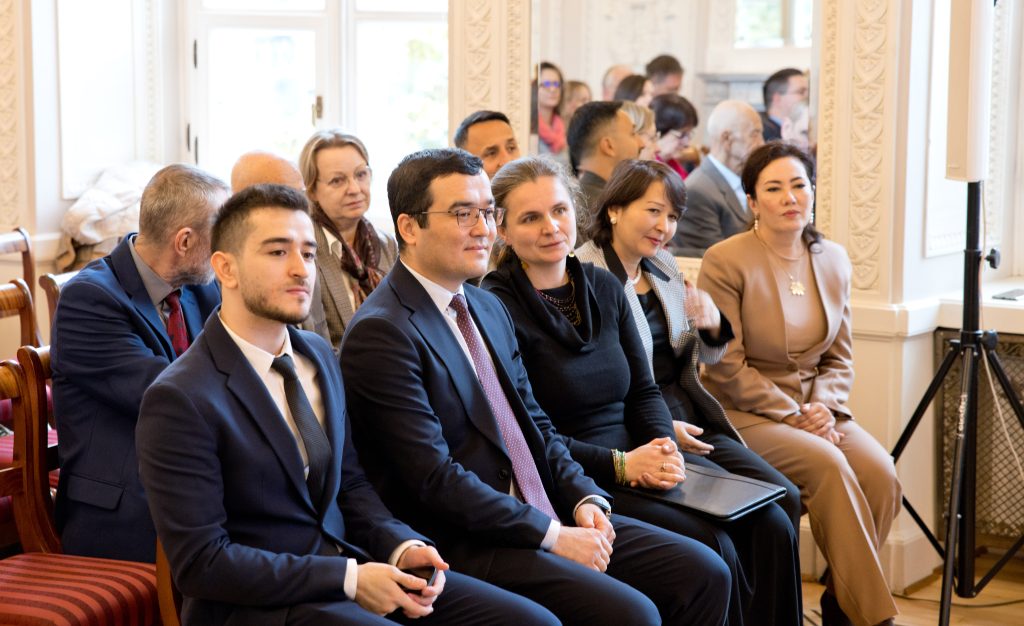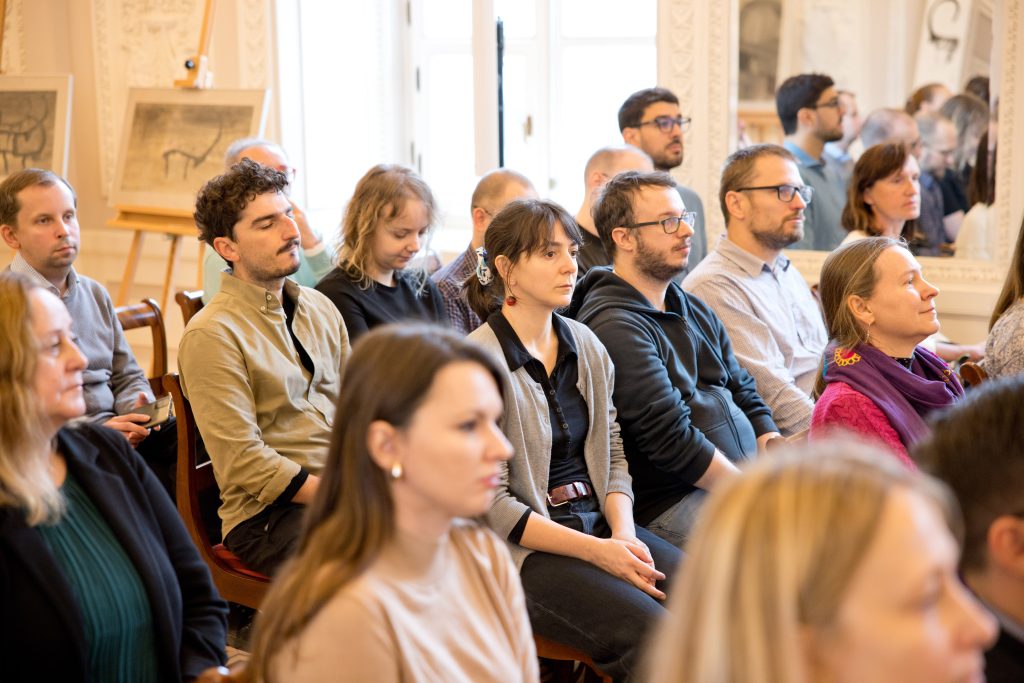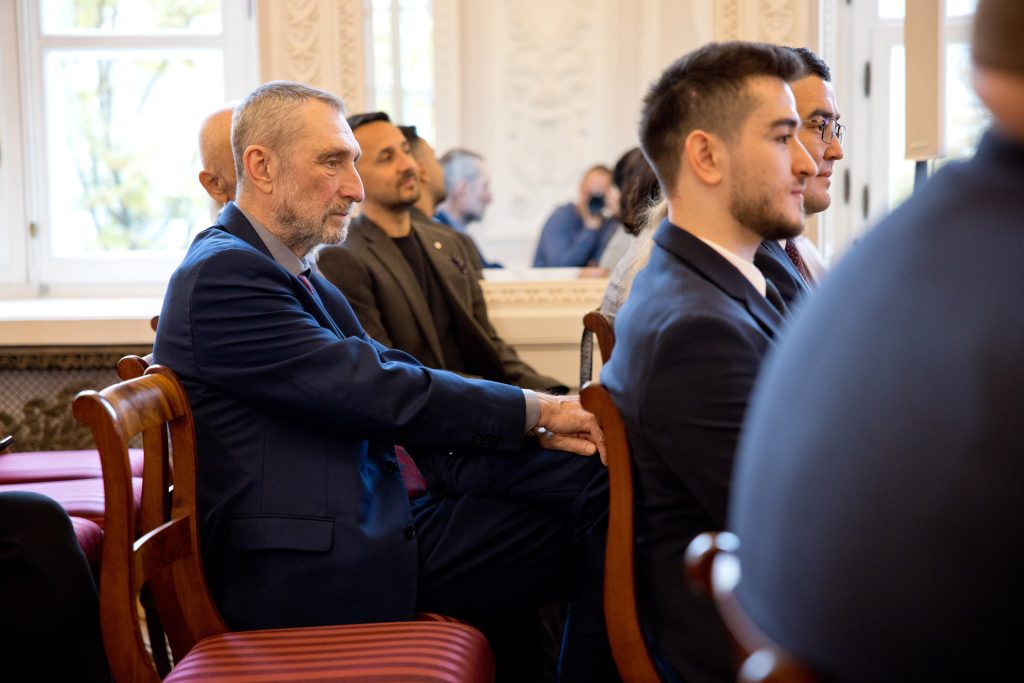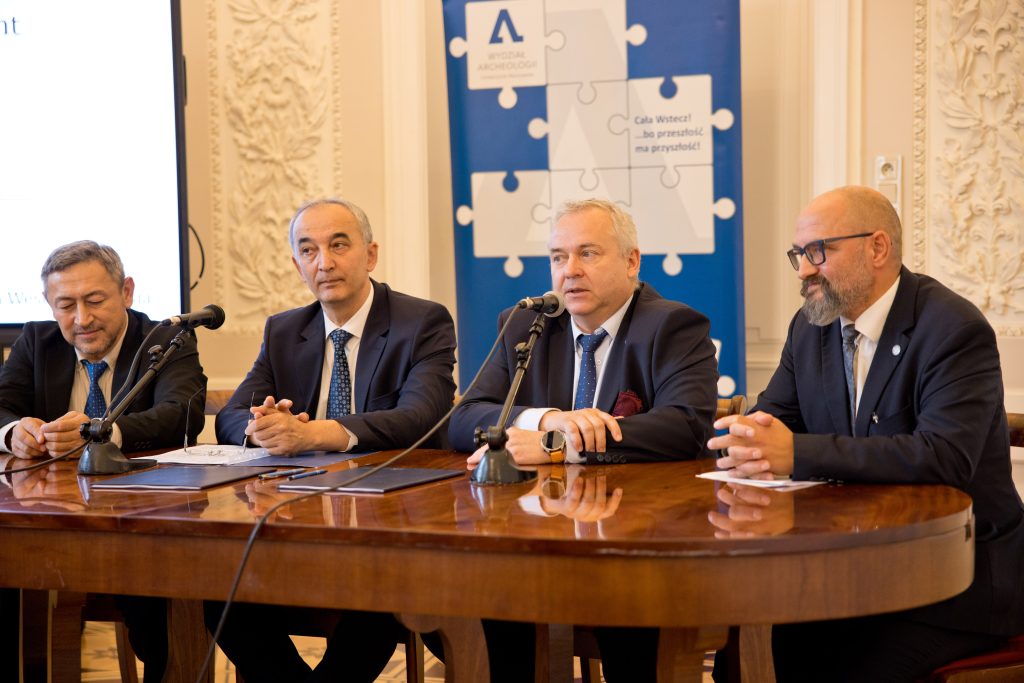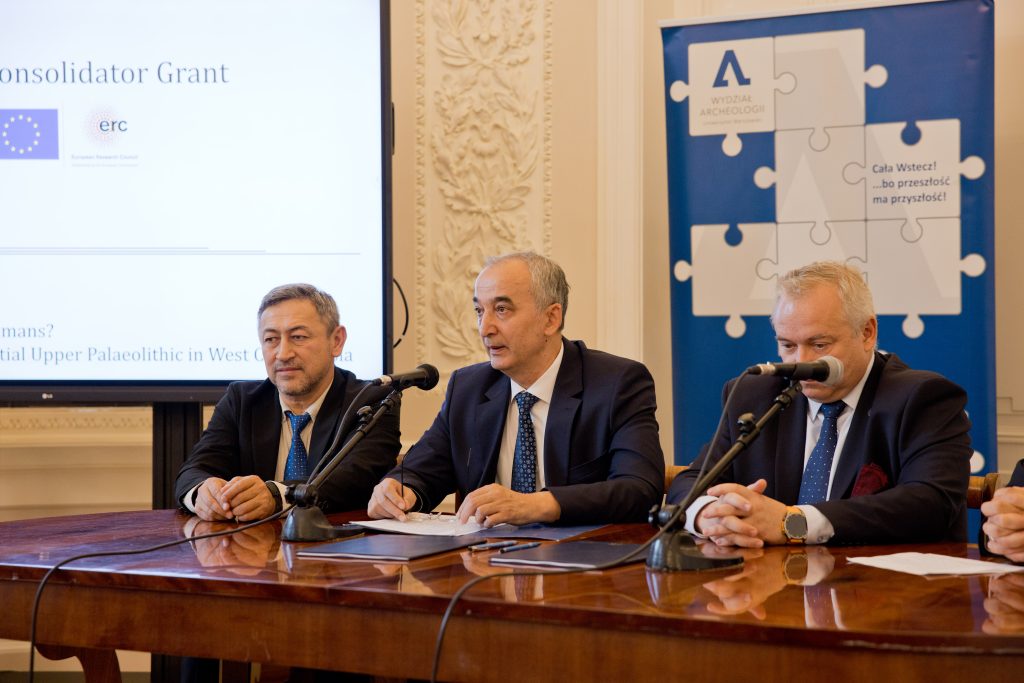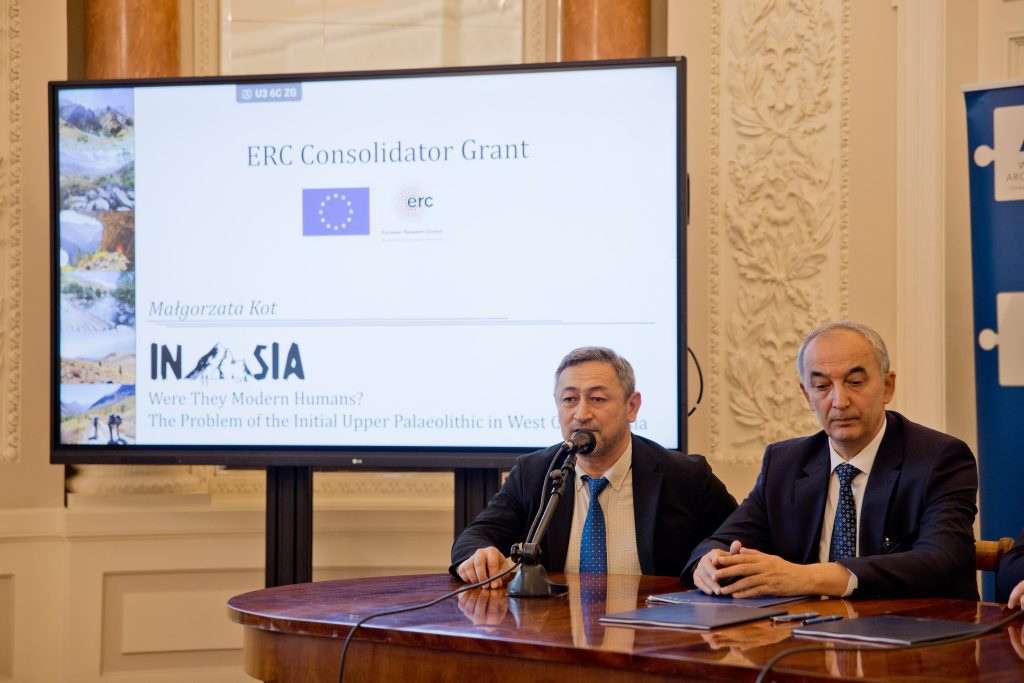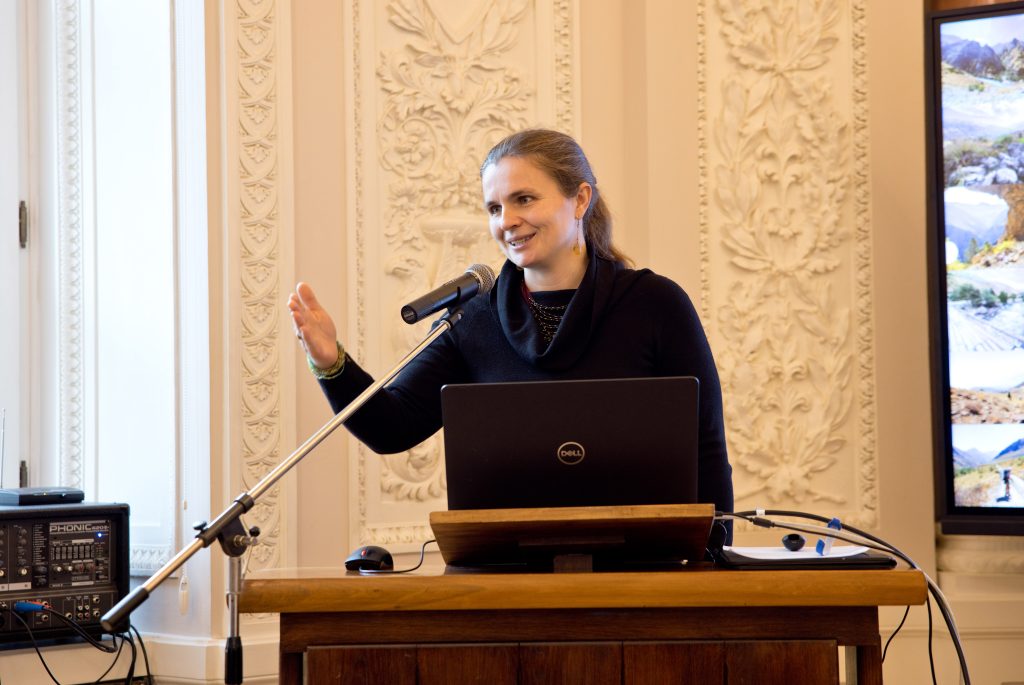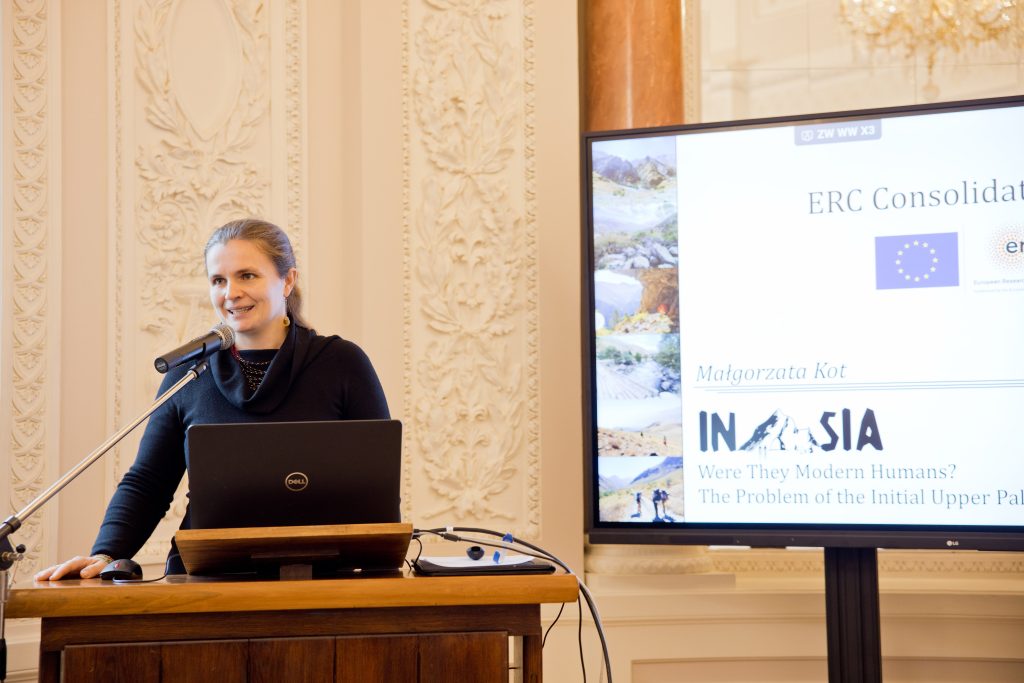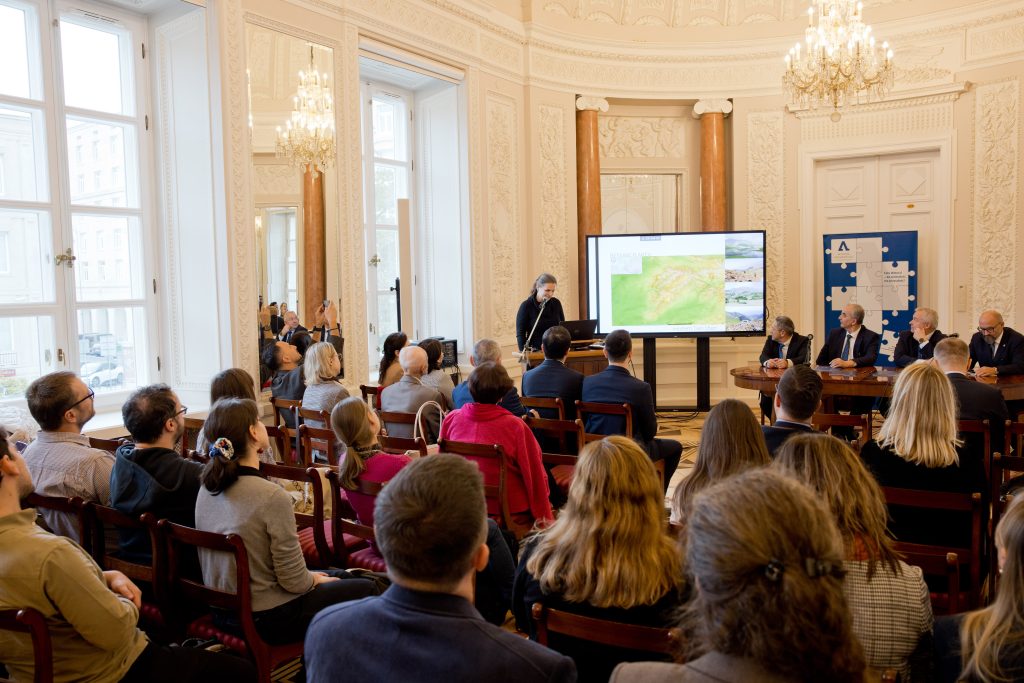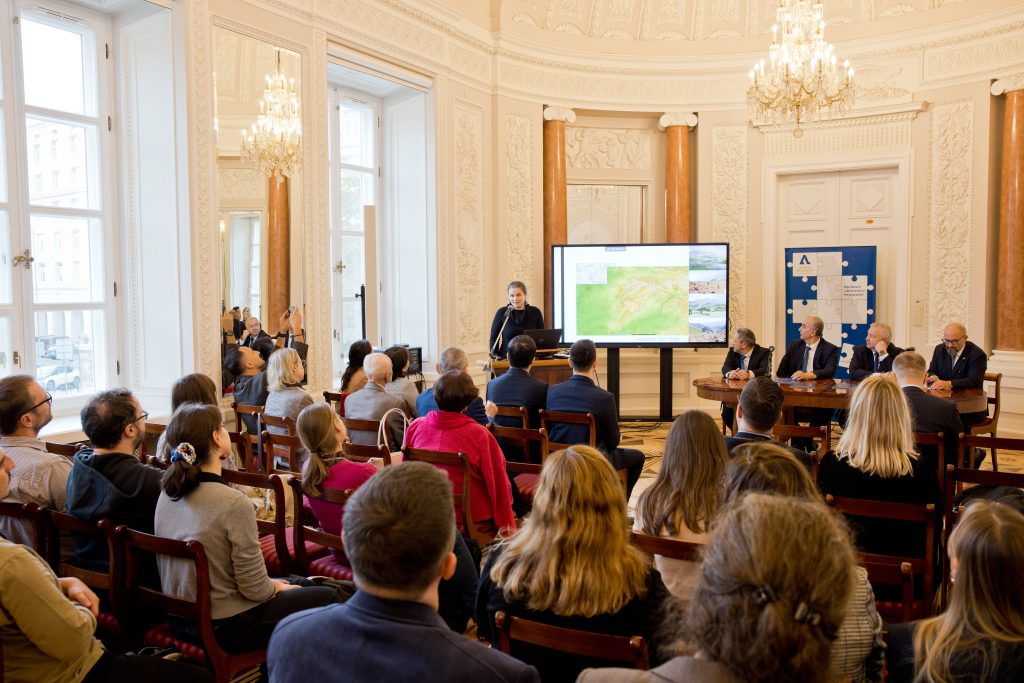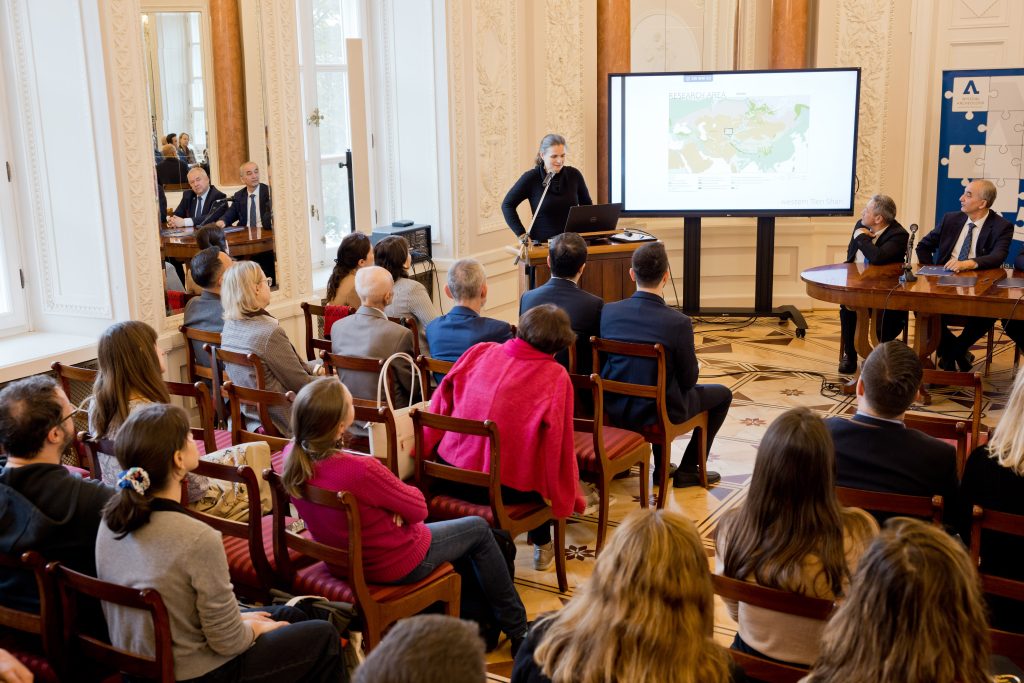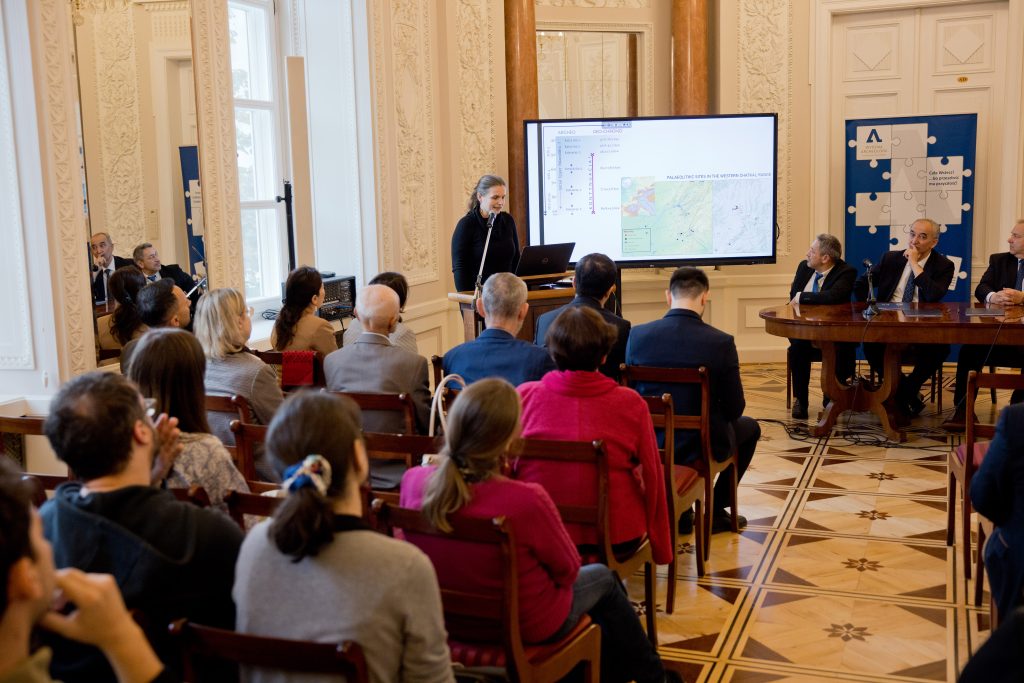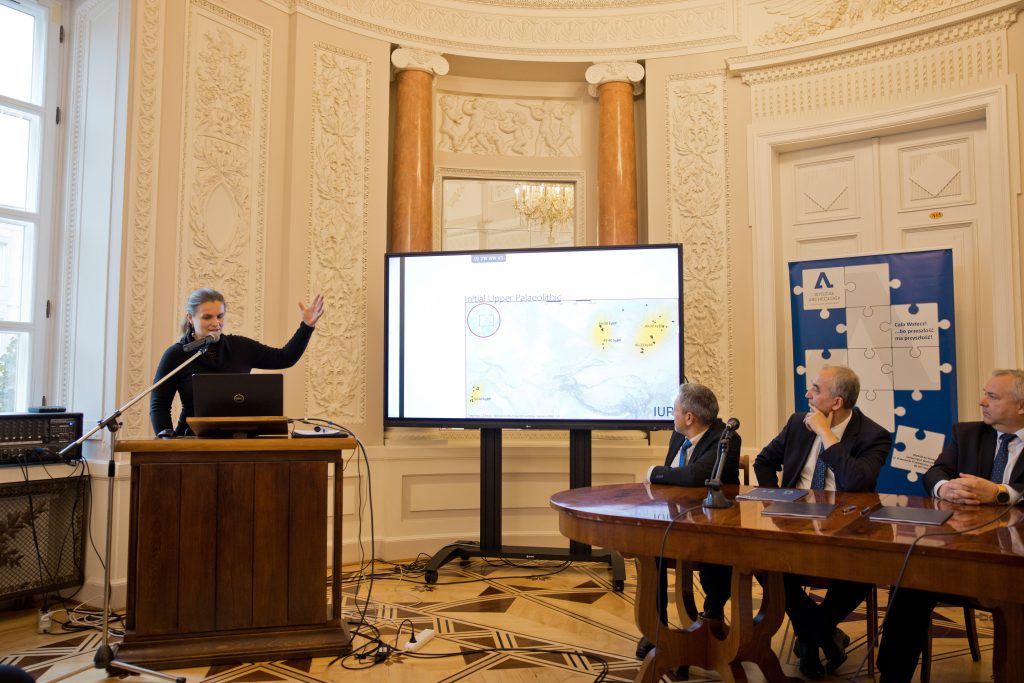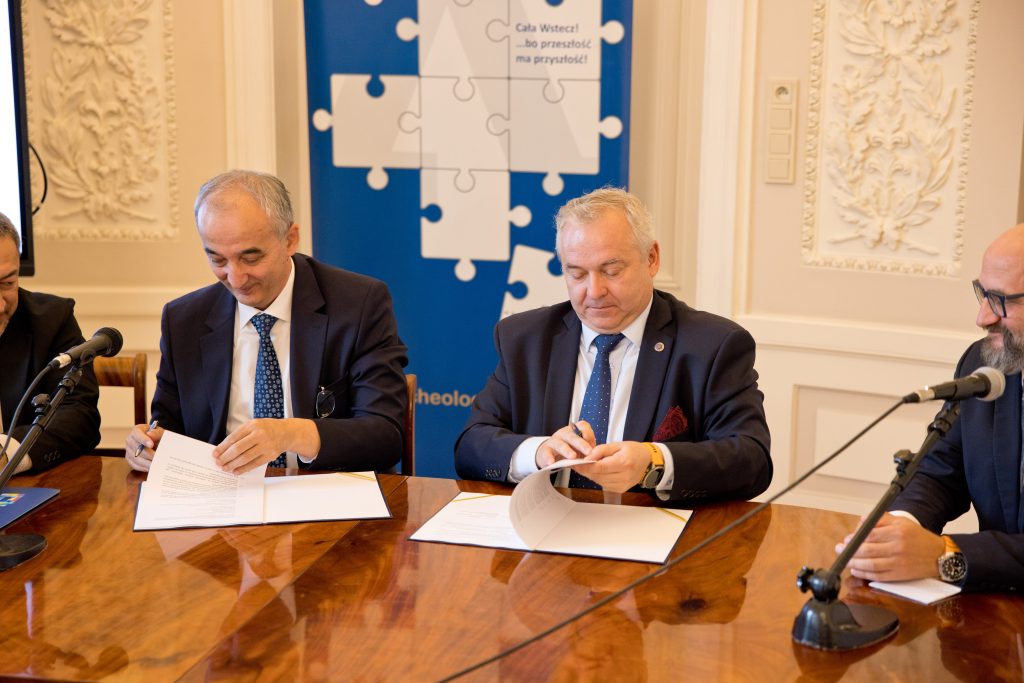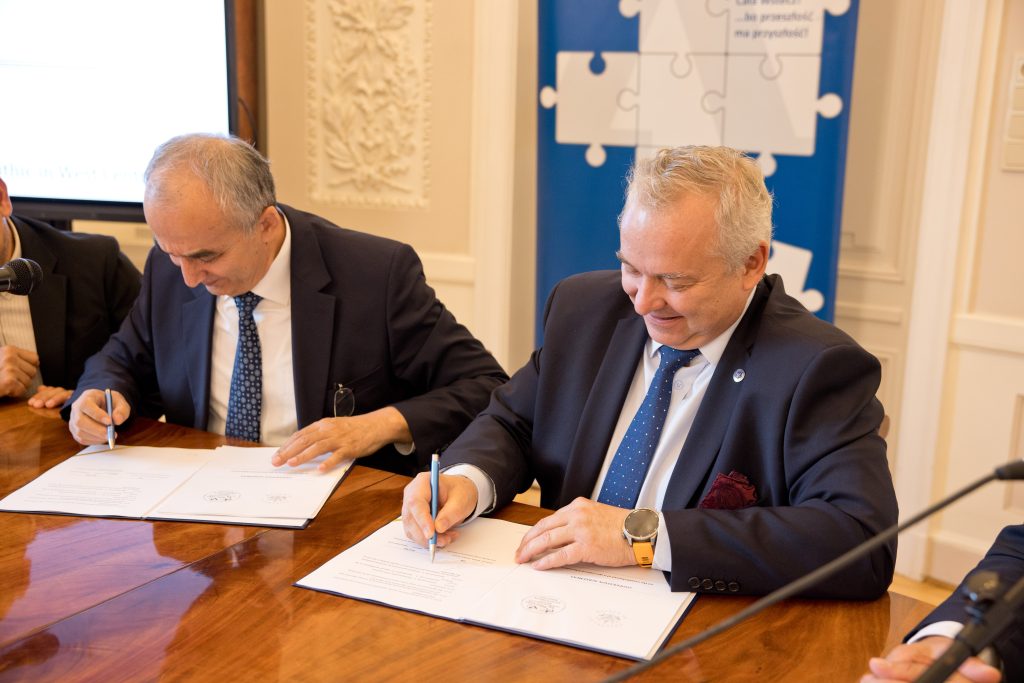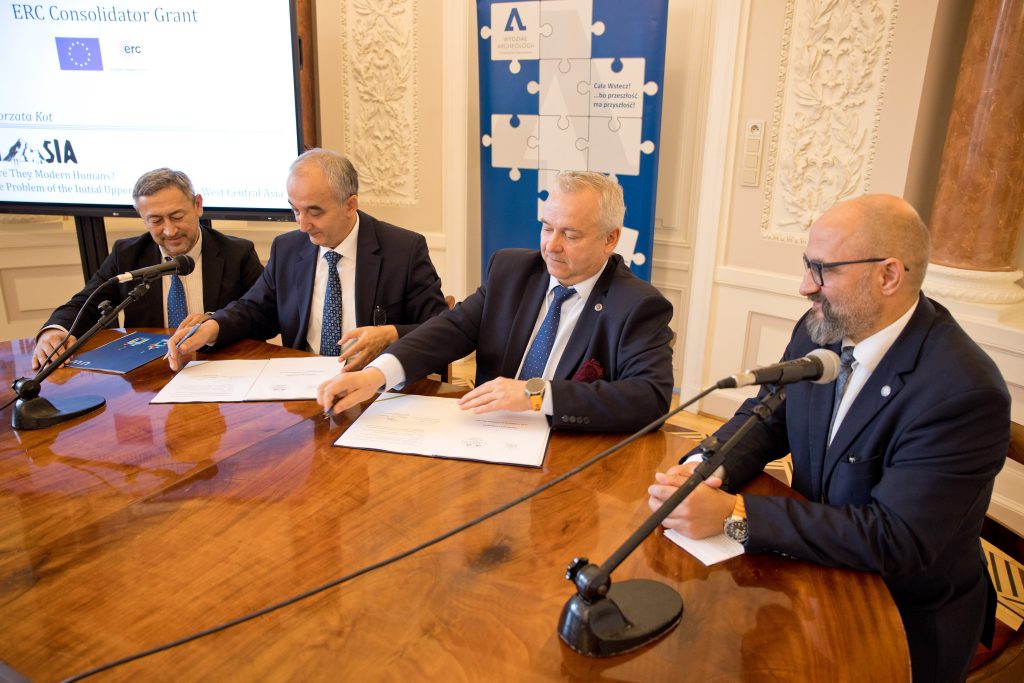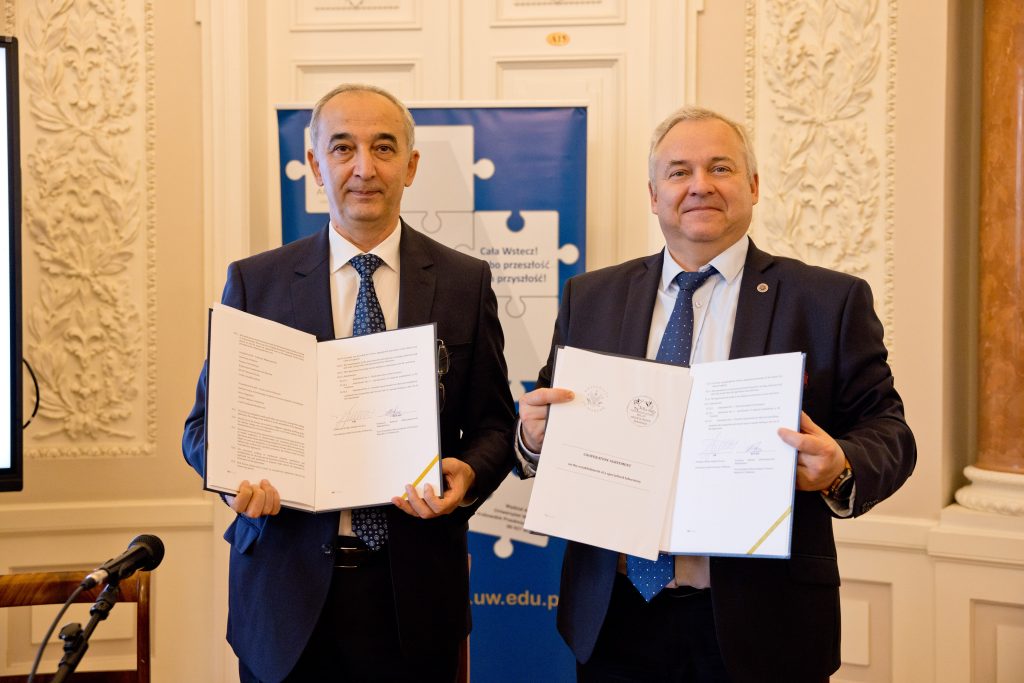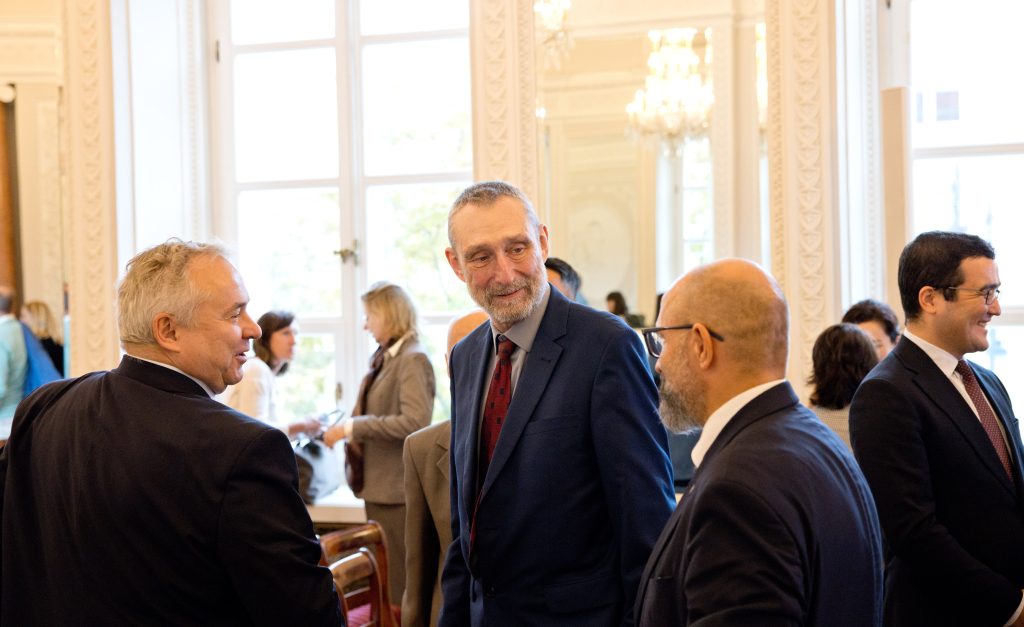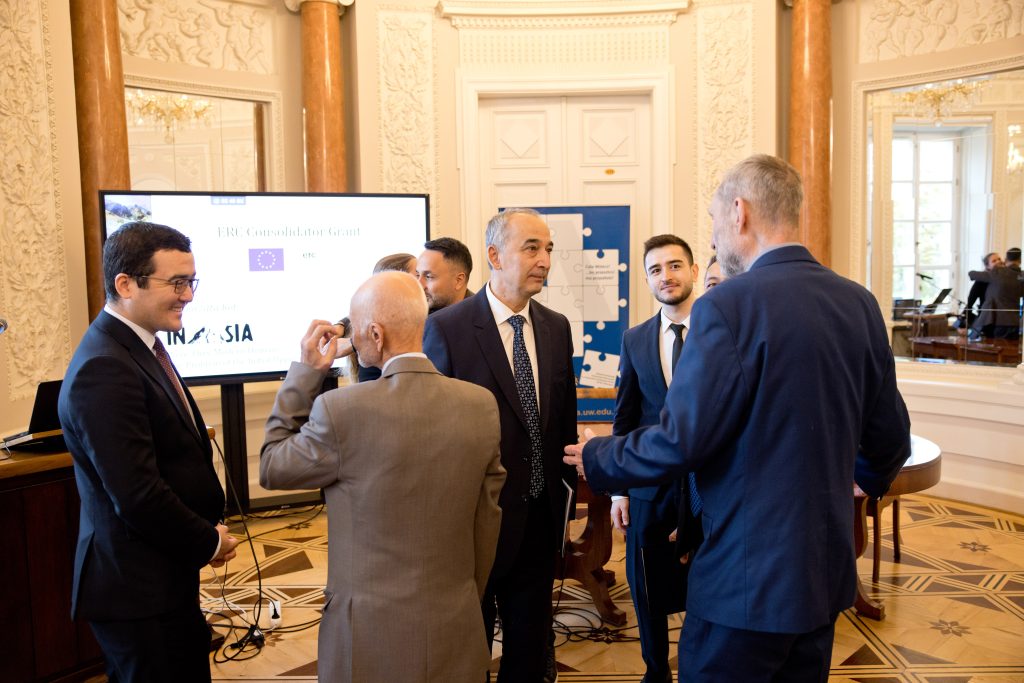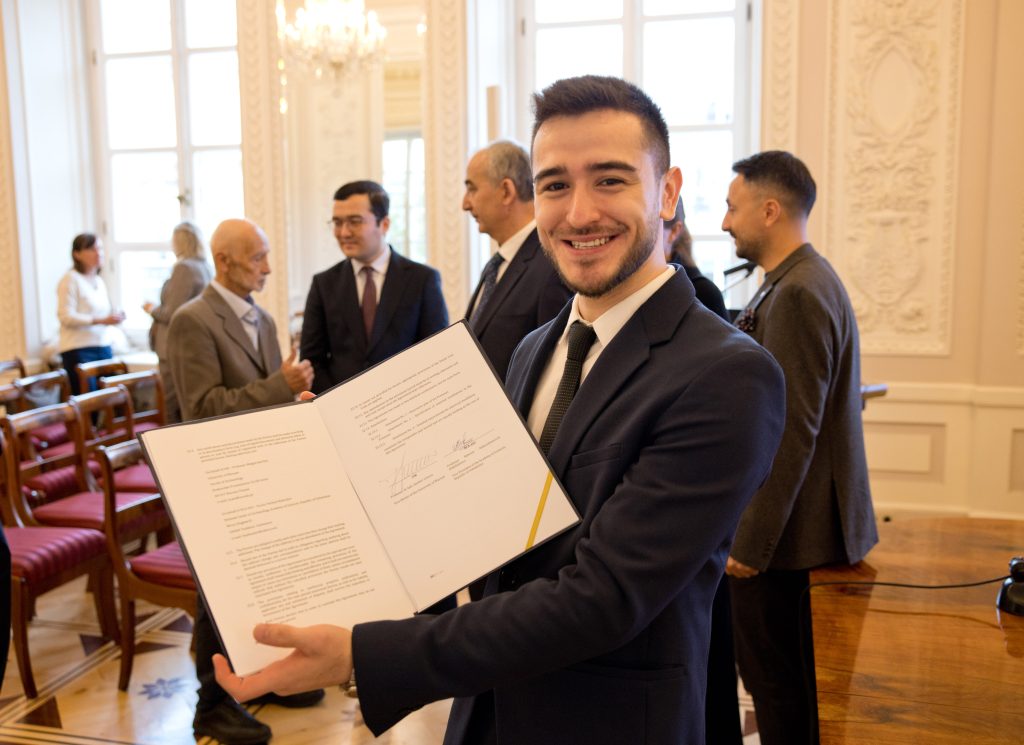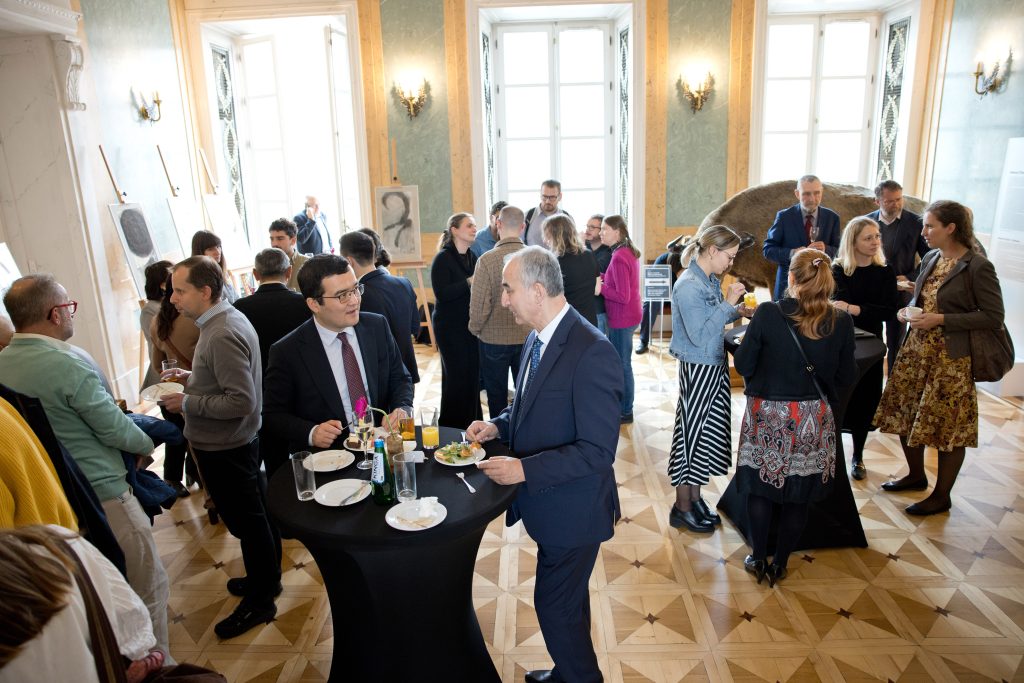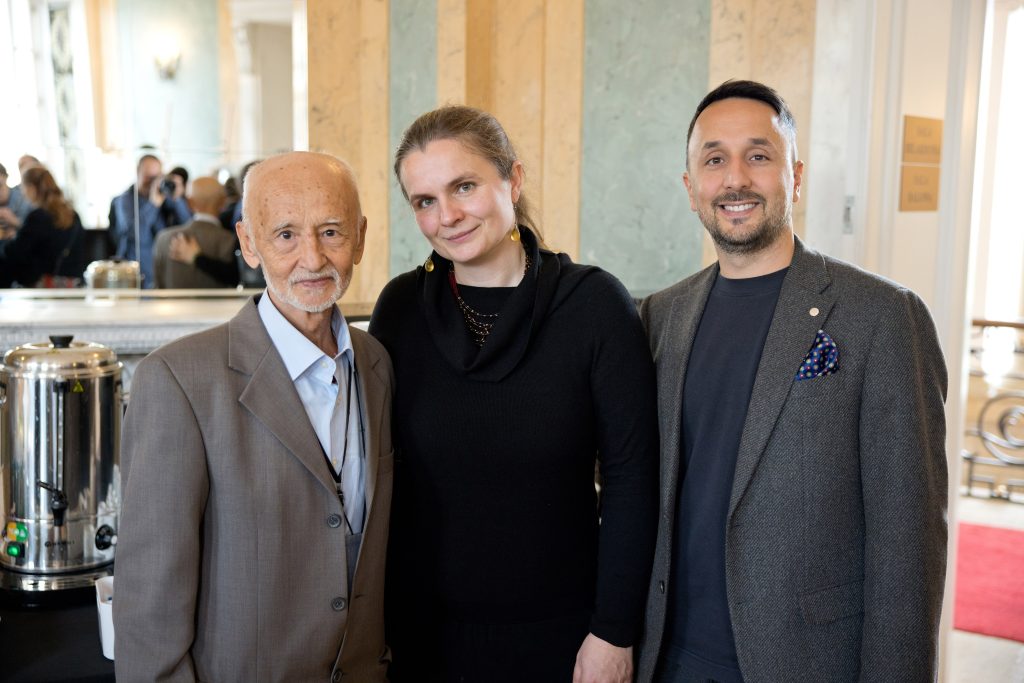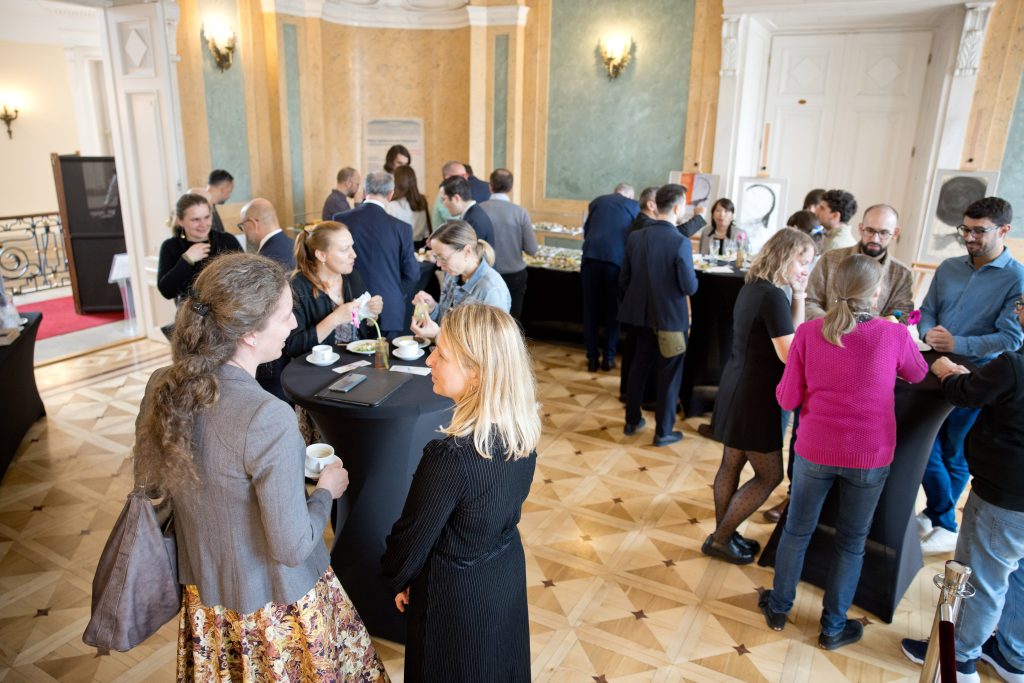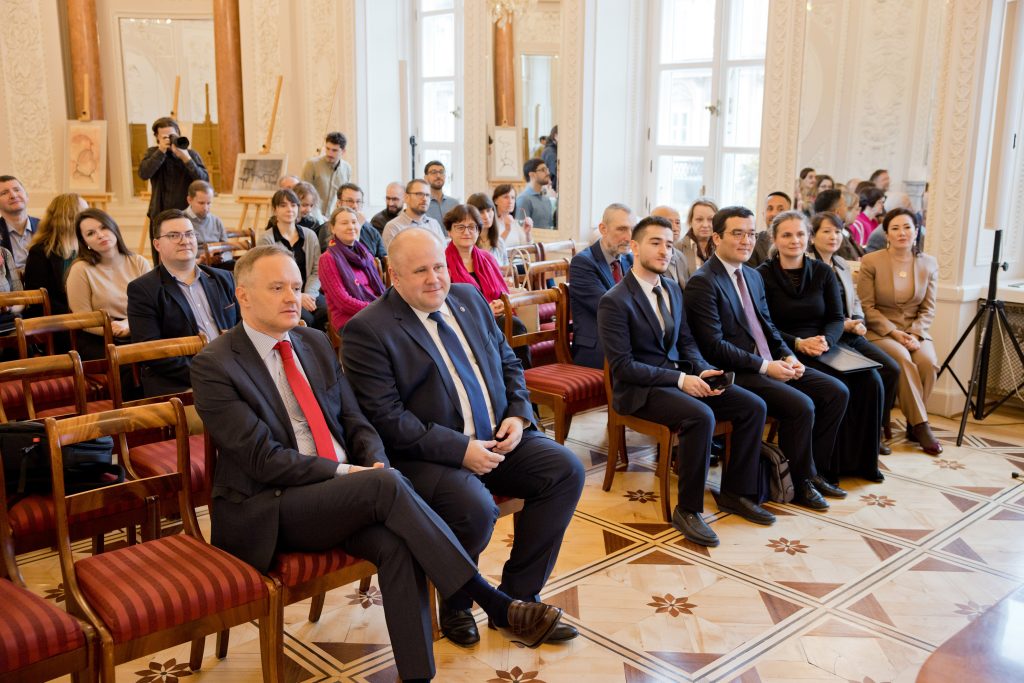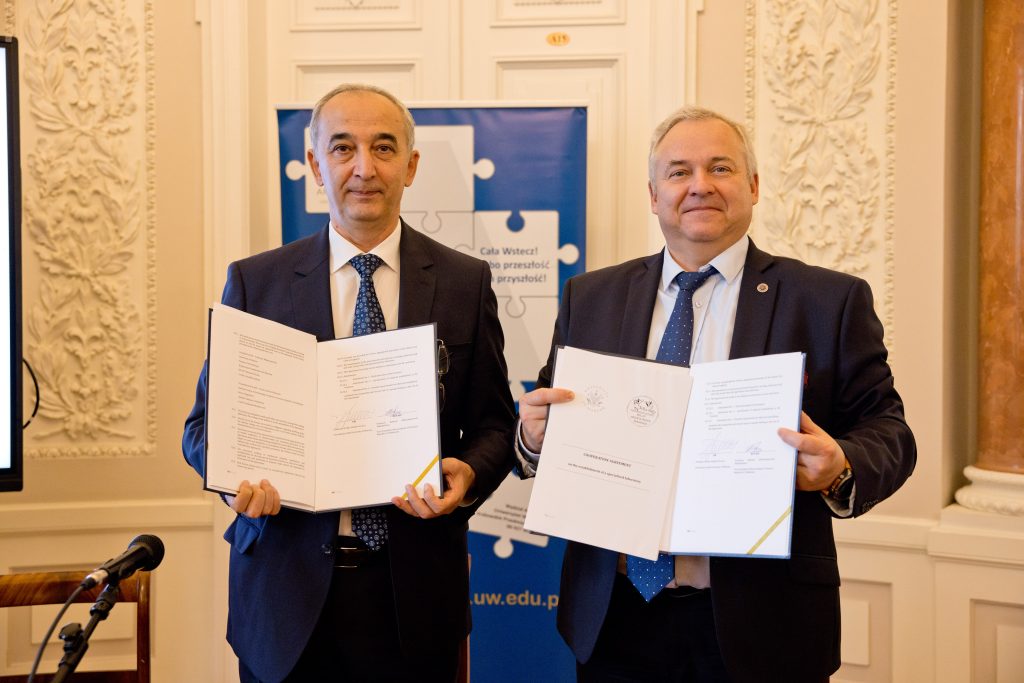
On October 7, the official inauguration of the INASIA project — Were They Modern Humans? The Problem of the Initial Upper Palaeolithic in West Central Asia — took place at the University of Warsaw. The research is being conducted by Prof. Małgorzata Kot from the Faculty of Archaeology as part of a European Research Council grant. During the ceremony, an agreement was signed with the Academy of Sciences of the Republic of Uzbekistan to establish an interdisciplinary archaeological laboratory, which will, among other things, support research within the INASIA project.
The agreement establishing the laboratory was signed during the inauguration by Prof. Sambor Grucza, UW Vice-Rector for Cooperation and Human Resources, and Prof. Bakhrom Abdukhalimov, Vice President of the Academy of Sciences of the Republic of Uzbekistan.
The main goal of the INASIA project is to analyze relationships between hominids and Homo sapiens, including studies of remains and artifacts. One of its milestones is the creation of a fieldwork laboratory which will enable interdisciplinary analyses.
Following the signed agreemnet, the laboratory will be located in the building of the National Centre of Archaeology of the Uzbek Academy of Sciences (NCA) in Tashkent, allowing for the adaptation and allocation of appropriate spaces within the NCA to suit its needs.
The joint laboratory will serve as an important facility for both Prof. Kot’s project and an opportunity for building up research capacity and independence for NCA.
Polish–Uzbek Cooperation
On the same, day prior to the official event, there was a meeting between UW Vice-Rector, representatives of the Academy of Sciences of Uzbekistan, the Embassy of Uzbekistan and members of the UW academic community. The discussions summarized existing scientific cooperation and outlined directions for its future development. Joint research projects in the fields of archaeology, biology, and geology were discussed. Participants emphasized the long-standing and intensive relations between the University of Warsaw and academic institutions in Uzbekistan, which have resulted in numerous publications, research exchanges, and joint field expeditions.
The meeting also addressed Uzbekistan’s historical heritage and the contribution of Polish archaeologists to documenting and analyzing the region’s monuments. Further discussion focused on the development of interdisciplinary research on metals, particularly concerning their biological and chemical properties. The talks also covered prospects for expanding cooperation, including organizing future research expeditions, preparing joint scientific publications, and enhancing student and academic staff exchange programs.
